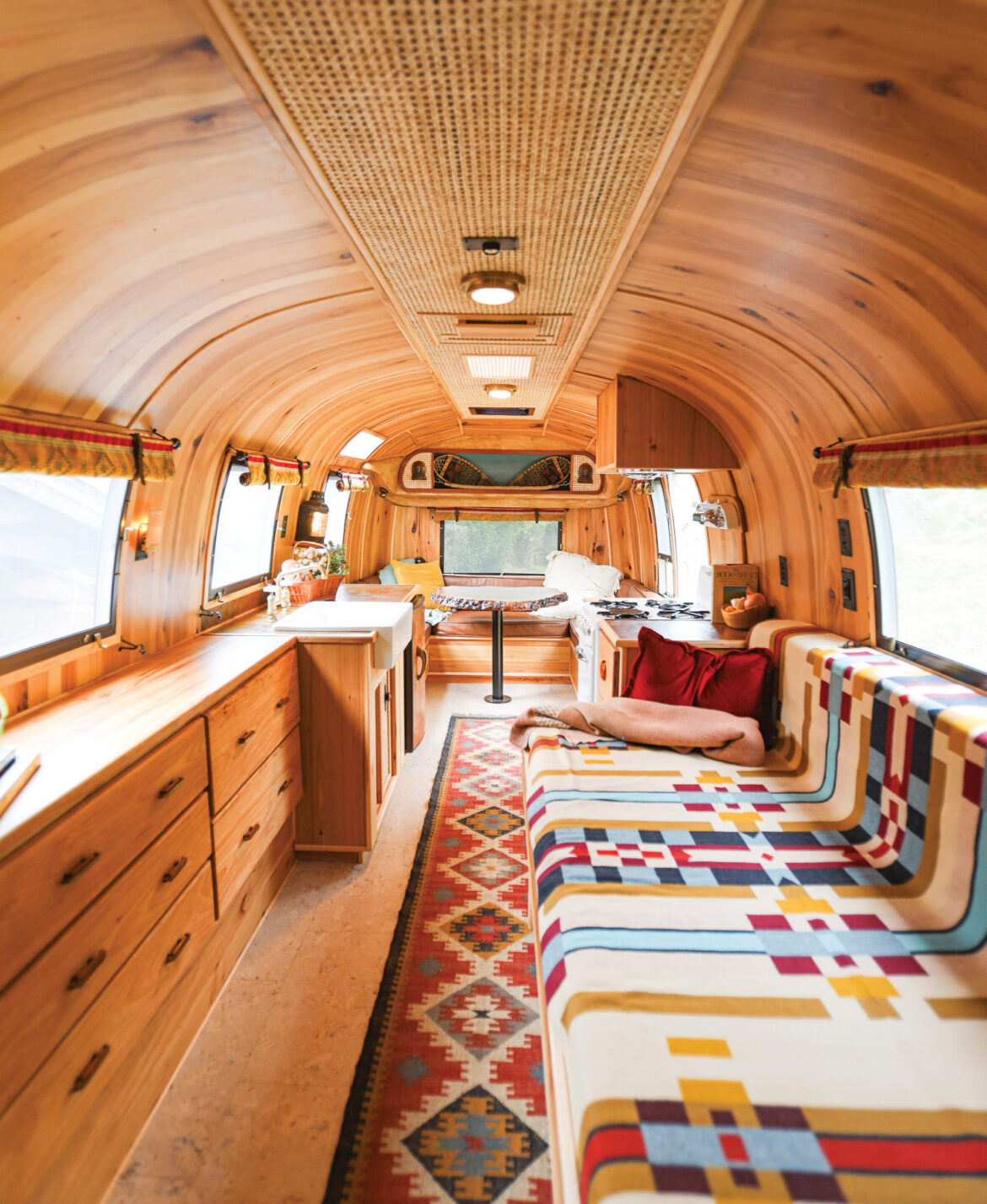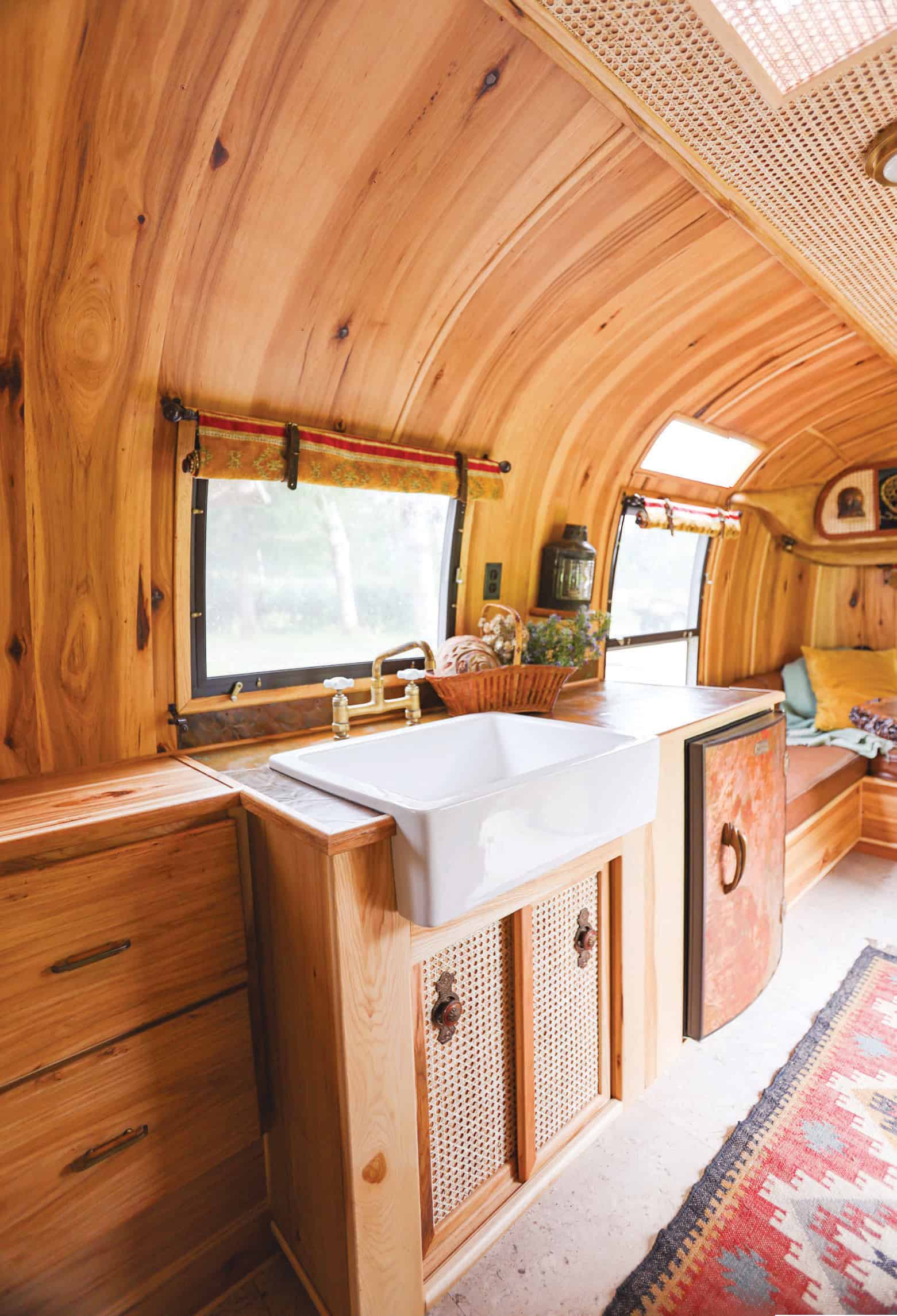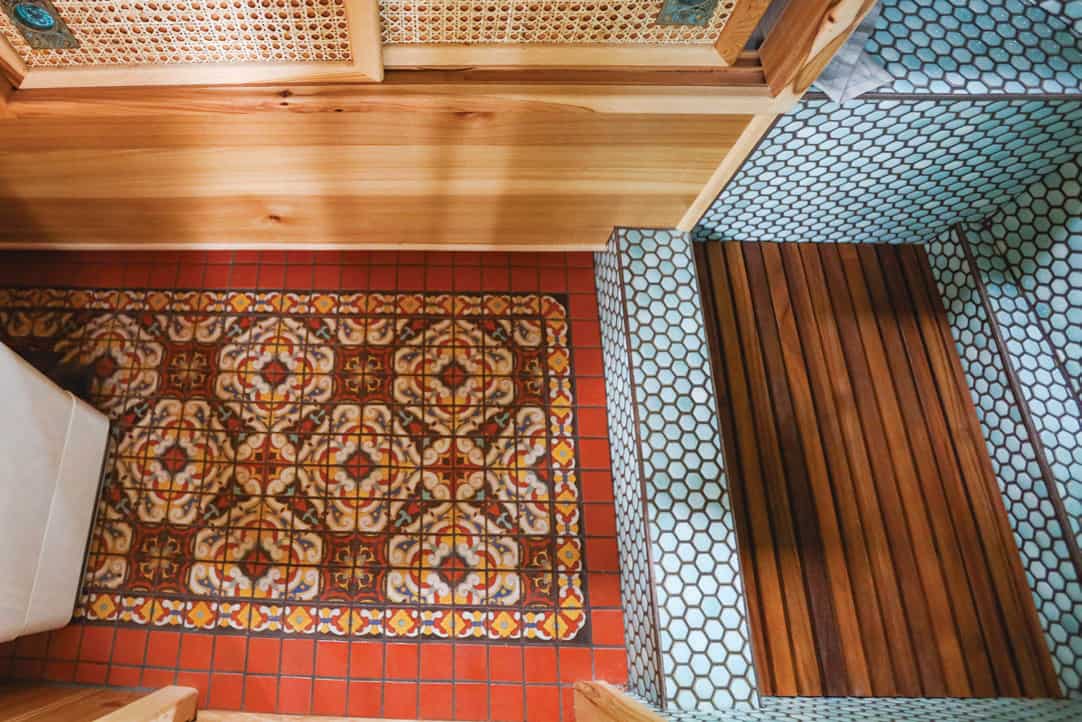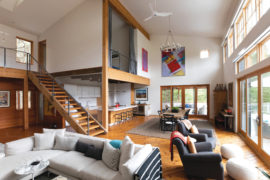A couple creates one-of-a-kind Airstream interiors in Southern Oregon
written by Melissa Dalton photography by Bethany Williams
With a business name like Perpetually Devastated, Parker Bolden and Bethany Williams are used to explaining the meaning. “We are sensitive people and find the state of our world depressing sometimes,” said Williams. “People hate others just for being different. There’s environmental degradation, extractive capitalism, the list could go on and on. You could just be really sad. It’s all perpetually devastating. And yet, you have to find a way to make yourself happy, to make things just a little bit better if you can.” One of the ways that the two have done that is by renovating Airstream trailers alongside a talented crew at their shop in Southern Oregon.
Each project starts with a trailer that has solid bones, which they use as a base to rebuild the interior from scratch, from modernizing mechanical systems, to applying artful new finishes. “I personally love that it’s recycling something that would otherwise just sit in disrepair,” said Bolden. “Plus, we’re both Libras, so we like shiny, fancy things,” said Williams. “The shape is aesthetically appealing. It’s Americana. We like to wink at that while also making something that feels custom and new, and entirely hand-built.”
Bolden and Williams’ first Airstream overhaul in 2015 was their own, where they were living in Northern California. It was a summer DIY project, so they learned as they went, and upon selling it, their future design-build business was seeded. By 2020, the couple returned to Oregon—he grew up in Gaston and she went to high school in Hermiston—with a purchase of 11 acres between Bandon and Coquille.
There, they grow organic vegetables and wildflowers for a CSA, host an off-grid Airbnb/guest cottage, build Airstreams, have an annual music and theater gathering, and keep chickens and goats, about eight of the latter as of last count. “We started with two,” said Williams. “But when you have goats, people suddenly start giving you all their goats.” Airstream clients have been equally forthcoming, often finding them online. While their first project may have been about learning the basics, each one since has become an opportunity for art, craft and experimentation.
Take the Monty, a 1968 Overlander they collaborated on with L.A.-based couple Duwayne and Jan Dunham. When Duwayne was filming Homeward Bound: The Incredible Journey, a 1993 Disney classic, he shot in multiple regions of Oregon, including Portland, Smith Rock and Eastern Oregon, the latter passing for the Sierra Nevada. But decades later, there’s more to see: “The main area for us to explore, and why we did this trailer, is the Oregon and Northern California coast,” said Duwayne. He and Perpetually Devastated spent a year discussing inspirations for the project, with the main one becoming an Arts and Crafts-style cabin in the Adirondacks, a style the Dunhams saw and appreciated in a friend’s remodel.
To start, the crew anchored the trailer’s 216-square-foot layout with a U-shaped banquette surrounding a table, followed with a centralized kitchen and a lounge area with a couch that converts into a bed. Duwayne didn’t want the sleeping area sequestered at the back, as can be typical in this Airstream model. “I knew there would be days when Jan and I just want to lay and read, and we’d want to see the rest of the trailer and be part of it,” said Duwayne. The bathroom is tucked at the rear, behind reeded glass pocket doors.
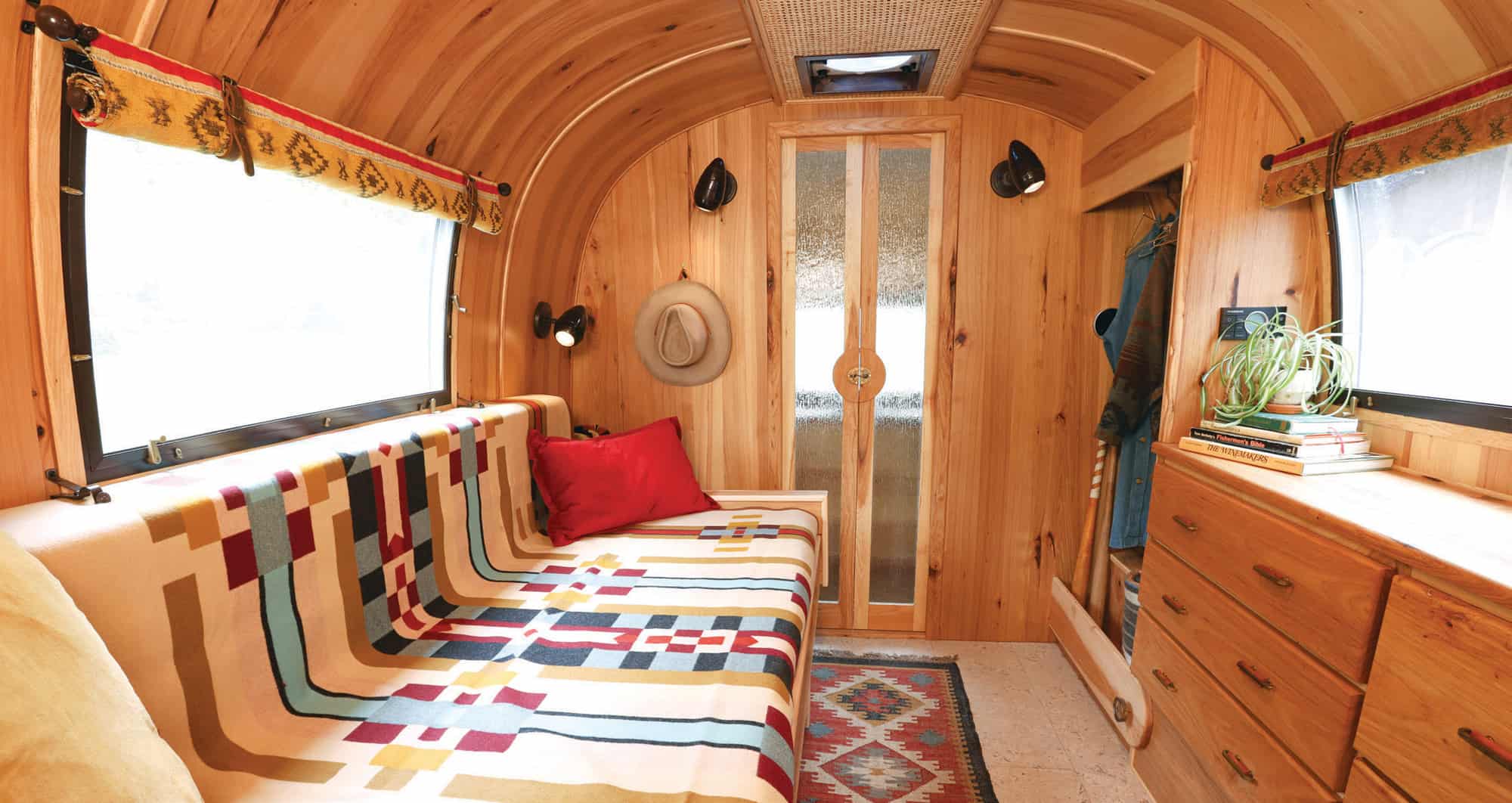
Everything inside is custom, handmade or vintage, with Duwayne sourcing a lot of the items alongside the designers. The goal was to foster a lived-in feeling using solid materials that felt good underhand. “The tactile experience is the biggest thing for me,” said Bolden. “As well as getting to interpret what’s feasible inside this space that we’re building.”
Now, in a pleasing contrast to the shiny exterior, waxed hickory wood wraps the curved walls and forms custom cabinetry. Cork floors and rattan accents add texture, including a clever rattan runner at the ceiling that conceals wiring. The bathroom is ensconced in colorful handmade tile, with a wood mat underfoot in the shower.
Vintage items, like the reading sconces, Bakelite knobs and restored 1947 O’Keefe and Merritt stove, add authenticity, as do bespoke touches, like an air distribution box at the ceiling made of wood and rattan. Such custom fixes are the fun of upgrading these trailers, said the couple, since typical home parts aren’t often the right scale (too big), and off-the-shelf components can look generic and plastic.
Bolden loves to dig into such details, and with the crew and lead carpenter Jeffrey Ostercamp, solve creative problems via experimentation. For this project, it was the wrinkled copper countertops, which have a patina that was achieved only after forty days of tests with a custom solution. “Parker is an artisan and craftsman,” said Duwayne. “It was a pleasure working with him because he wasn’t going to give up.” The team also stripped new plumbing fixtures of their original shiny finish, and milled a chunk of black walnut into a live-edge dining tabletop with a rigged-up chainsaw.
“We don’t always have the perfect tool, or the time, or the resources, so finding workarounds is a positive thing,” said Williams. “So bust out the chainsaw, put on your safety goggles, and buckle up, you know?”


